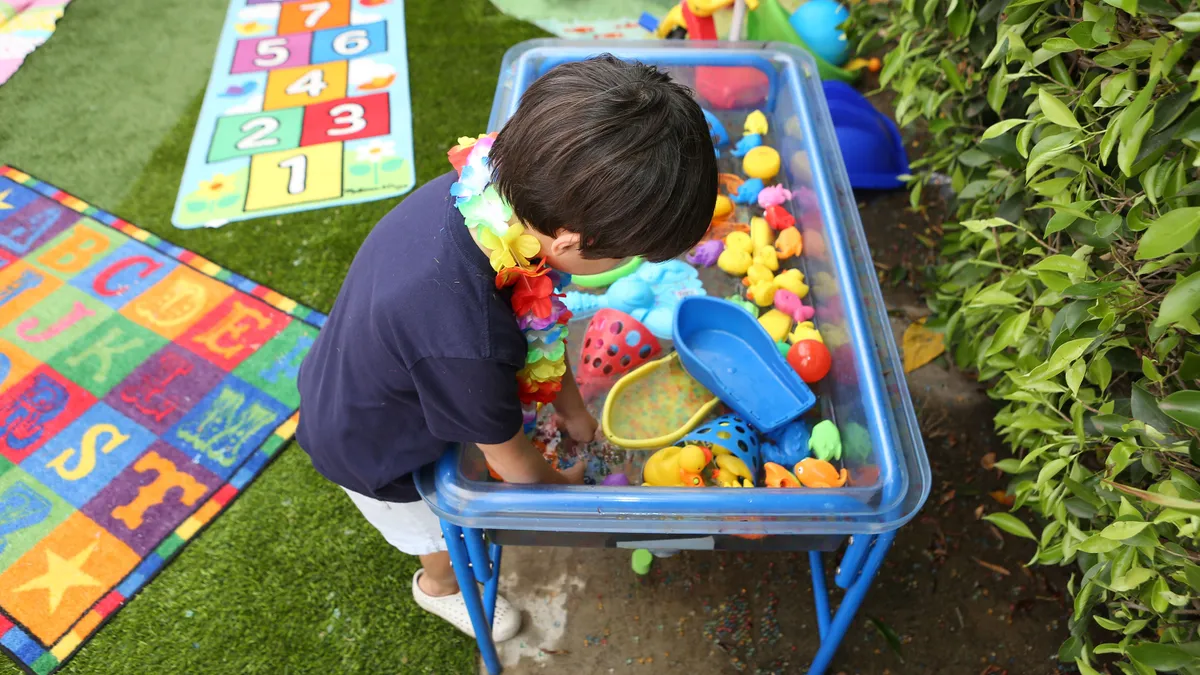Dive Brief:
- Students may need summer classes to stem learning loss between school years, but traditional summer school classes have given way to newer offerings that combine camp-like activities with academic lessons.
- Planning these robust summer learning opportunities takes time and effort to create attractive models students want to try, said Catherine Augustine, senior policy researcher with the RAND Corp., and one of two primary investigators for the nonprofit think tank’s National Summer Learning Project.
- Augustine added that partnerships to build more diverse experiences can often vary depending on the region, but the goal is to find activities that entice students to return every day. These can be aligned with academics, though programming should more importantly include options students might not normally have the opportunity to try.
Dive Insight:
“It’s hard to do this, getting fun activities in place which draw kids in day after day,” said Augustine. “And teachers are incredibly burnt out. It takes time to plan and put a curriculum in place, and it should not be thrown together at the last minute.”
Summer programming has become even more critical as states and districts seek to recover learning lost during COVID-19-related school closures. Federal funding to support these efforts has expanded since the pandemic began, said Augustine.
Research published Wednesday by the American Educational Research Association finds summer math learning programs, for instance, can be effective in addressing the disproportionate learning loss experienced by low-income pre-K-12 students. The programs were connected to positive outcomes in math scores, attendance and disciplinary referrals.
Meanwhile, a fact sheet released Wednesday by the White House highlighted summer learning and enrichment investments in all 50 states, Washington, D.C., and Puerto Rico.
Lodi Unified School District in California is just one district that received millions of dollars in federal and state grants for technology, teachers, ventilation — and summer activities. The district tapped into $131 million in COVID-19 relief funds to send 240 of its high school students to a free summer learning program at the University of the Pacific, according to EdSource. The goal? To allow pupils to experience college before they walk through the door as freshmen.
The University of the Pacific accepted 300 students for the two weeks, with learning options that included a women’s leadership program, a pharmacy program that discussed immunizations and clinical trials, and tracts on graphic design and the business side of gaming.
Students stayed overnight at the campus for two weeks, with time to socialize while learning about new career opportunities. The experience was one Lodi plans to repeat, with funding in place to send students for two more summers.
In rural districts, stakeholders could team up with farms to offer horseback riding or with firefighters so pupils can learn about the specifics of fighting fires. Districts can tap colleges or universities to offer elective courses to high school students. Suburban or urban areas can team up with dance, arts or even culinary groups, for creative options.
Optimally, districts looking to tap these resources will have invested time to find groups with a proven track record of working with students, said Augustine. Or they might team up with partners who can find opportunities and vet their learning models, Augistine said.
Teachers also need time to develop a curriculum and ensure summer lessons dovetail with what’s taught in the traditional school year. But the results can be worth it, said Augustine.
“In general, I am happy there are more programs,” said Augustine. “Even if COVID gets to a place where it’s just a speck in our memory, there will always be kids who are behind other kids, and summer is a great opportunity to address that.”











